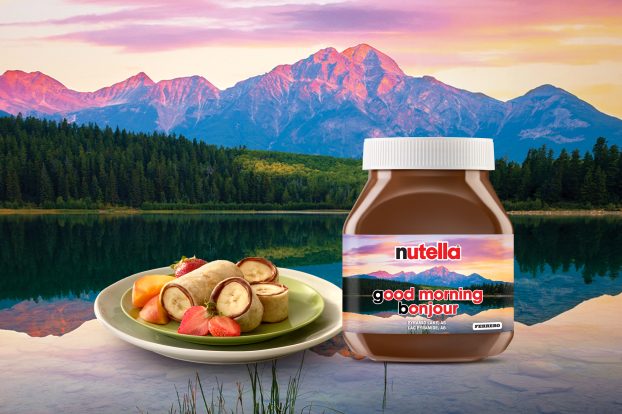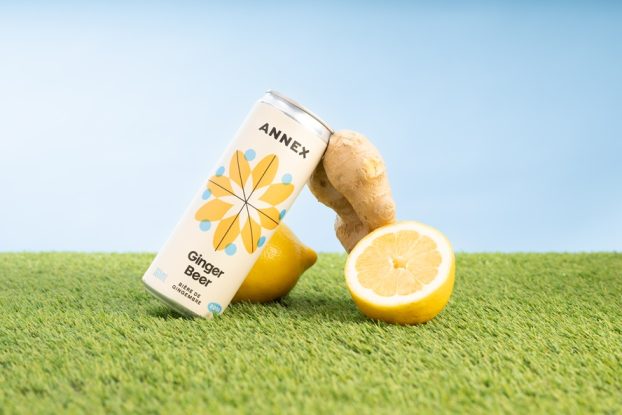Also in this report:
– Help line: Minwax has introduced a number consumers can call for information and advice – and its reception has surpassed expectations: page 27
– Porking out: The Ontario Pork Producers Marketing Board has had a feast of responses to its magazine ads, which offer seasonally-oriented recipe cards, from its targeted demographic and beyond: page 31
The boom in direct response marketing continues.
Wanting to generate awareness, trial and sales, advertisers are using the ‘old medium’ of magazines in combination with the ‘new medium’ of the World Wide Web (www) to put their toll-free numbers, and, ultimately, their messages, in front of consumers.
The first Canadian confectioner to advertise on the Internet is Nestle Canada, this country’s branch of the Swiss-based conglomerate.
Nestle Canada is using a ‘sub-site’ (a site that piggybacks on an already existing site) or ‘id’ in the pages of Toronto-based Shift magazine, which specializes in youth and the digital culture, to create awareness of its Smiles ‘n Chuckles confectionery products such as Jelly Tots, Soda Kaps, Fruit Joy, Moon Rocks and XXXTreem.
Randy Johnston, Toronto-based director of the Smiles ‘n Chuckles lineup, says Nestle Canada chose a www address instead of a 1-800 number as its primary direct response medium because of its excellence as a vehicle to communicate with consumers in the key nine to 24 age demographic, and because of its cutting-edge image and appeal.
To heighten further awareness among the consumers it seeks, Smiles ‘n Chuckles is running an interactive contest at its Shift sub-site.
Users who log on at HTTP://WWW.SHIFT.COM/Shift/Smiles to find the Republic of XS2 – named after the ROX2 candy – can win one of 500 Smiles ‘n Chuckles T-shirts.
When users log on to the home page, they are asked to complete a series of puzzles before they are permitted to apply for a T-Shirt by completing an on-screen name, address and age form.
Johnston says the Smiles ‘n Chuckles sub-site and contest opened up in June, although it has not yet been determined if or when they will be brought to an end.
Elsewhere, Lillian Lauritzen, product manager at Microsoft Canada, says that company will open a site on the Internet this fall for its Business Source information line, extending its existing toll-free line service into cyberspace.
But, for the time being, Lauritzen says, the focus remains on 1-800-60SOURCE in magazines as well as newspapers and on radio.
Lauritzen, in an interview from Microsoft Canada’s headquarters in Mississauga, Ont., says the North American service began in March and will evolve as technology and consumer demand evolve.
She points to Business Source’s startup in March as an example.
In the early days, Lauritzen says, the service featured interactive voice response technology, but it was soon discovered that customers preferred to talk to a live adviser.
Now, with the exception of a quick question to determine language preference – advice is available in English and French – ivr has been abandoned.
She says Microsoft Canada set up Business Source as a way to address the needs of small businesspeople who recognize their reliance on high tech, but do not know much about it.
Small business, Lauritzen points out in a commercial aside, is the fastest growing market in Canada today.
Equally, she says, the Business Source line can also provide advice and direction for that 40% of the Canadian small business world that still uses Microsoft’s dos (disk operating system) to run its computers and is contemplating joining that 45% of small business working in Windows, Microsoft’s successor to dos.
‘When [consumers] call 1-800-60SOURCE, they have the opportunity to talk to someone live about Windows, about dos, about how to move from dos to Windows,’ Lauritzen says.
‘[It’s] basically about our products, and [staff] can help [callers] make the move to our products, or know more about our products, or see demos of our products,’ she says.
‘So we had to use magazines, let’s say, because there are specific areas that these people will be reading in for other types of information about their businesses.’
As for the magazines that carry Nestle Canada’s and Microsoft Canada’s direct response address or phone number, Johnston says the choice was straightforward, but Lauritzen, for competitive reasons, was more circumspect.
Johnston says Smiles ‘n Chuckles opted for Shift because of its youthful, technology-literate readership profile.
He likens the title to the cyber-culture Wired magazine in the u.s.
Further, he says, since Shift already had a Web site with space available to advertisers, Nestle Canada’s costs were contained.
‘Your media should reinforce your message,’ Johnston says.
Business Source is directed at small business and is advertised in publications appropriate to that target such as Profit.
Lauritzen says Microsoft Canada is also buying space in newspapers and time on radio to promote Business Source.
She says the company is tracking the calls, and found those generated by radio spots come early in the morning when people were getting going or driving to work; so much so, Microsoft Canada had to extend its morning hours.
She says calls generated by print are spread out since print is a medium to be picked up or put down at the reader’s leisure.
The print and radio are running about even in total calls. Lauritzen had no specific numbers for calls that came as a result of magazine readers, specifically.
Johnston is a bit cautious about the number of hits the Smiles ‘n Chuckles sub-site has generated, although he concedes they have met or exceeded expectations.
But, in any event, he makes clear, only those Internet users who play the ‘treasure hunt game’ all the way through are counted.
The information Smiles ‘n Chuckles collects from its Internet hits is not particularly deep.
Johnston says Nestle Canada is gathering just name, age and address to draw a better profile on the game player, and has no formal plans at this time for anything more substantial, although at some as yet undetermined point Nestle Canada will analyze its findings.
He says the whole exercise is essentially a test project, with Smiles ‘n Chuckles finding its way as it moves along.
At Business Source, Lauritzen says Microsoft Canada is not collecting any demographic information from callers because that is not the idea behind the toll-free service.
However, she says at some point – not yet specified – Microsoft Canada might do some follow-up to find out how those consumers who called in are doing.
‘We get their names and we mail out the [information] kits if they want a kit,’ Lauritzen says.
‘But if [they] phone and say, ‘I just want to talk to someone about Windows 95,’ [callers can,]’ she says.
‘This is not a way for us to just get people’s names and bother [them] later or anything like that. [Business Source] is there to help you.
‘We do have the names, but we haven’t done anything, and we really don’t plan to do anything at this point in time because, as it evolves, we’ll probably follow through more and find out how people are doing, if they need additional help, information.’
As for building a direct response mechanism, Johnston and Lauritzen suggest a low-key approach, at least at first.
Johnston says any advertiser trying the Internet should not be too commercial,.
After all, it is already demanding a lot of the consumer to log on, find a company’s Web site or sub-site, then call up its commercial message.























